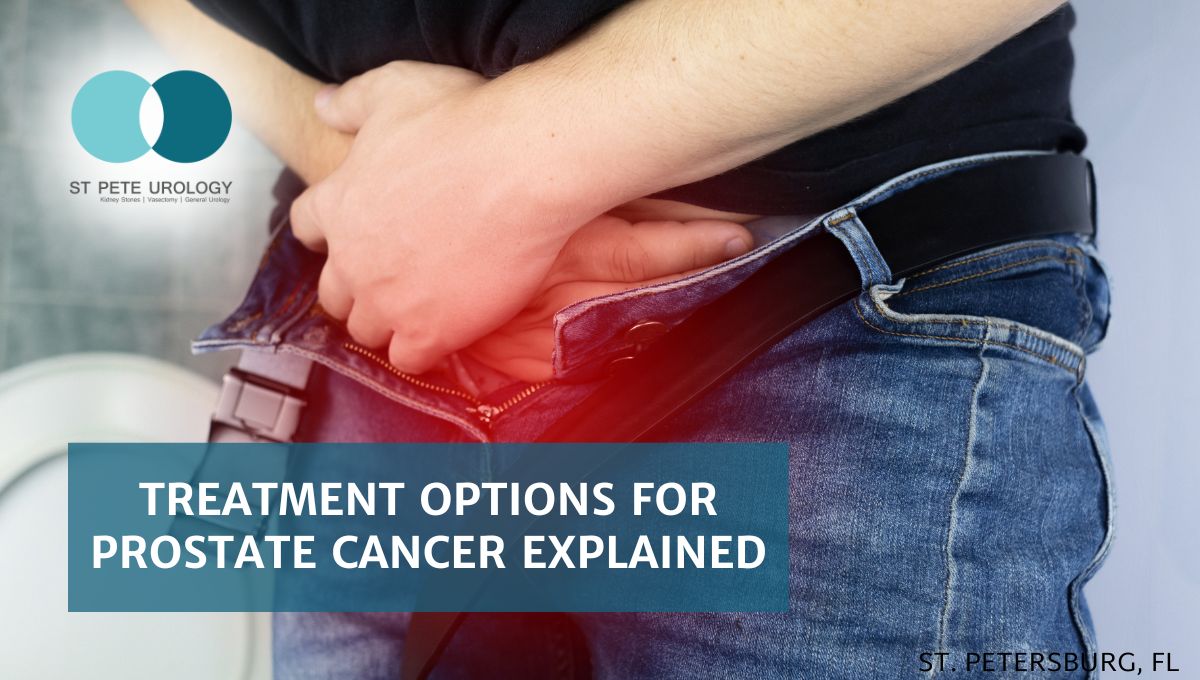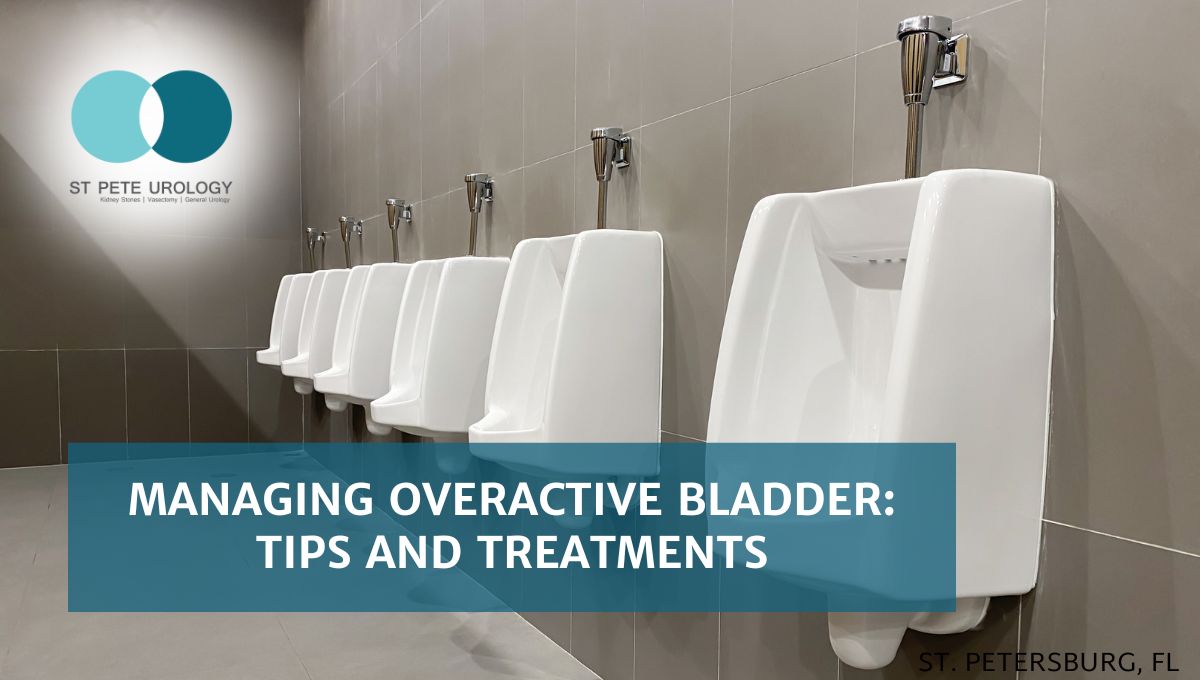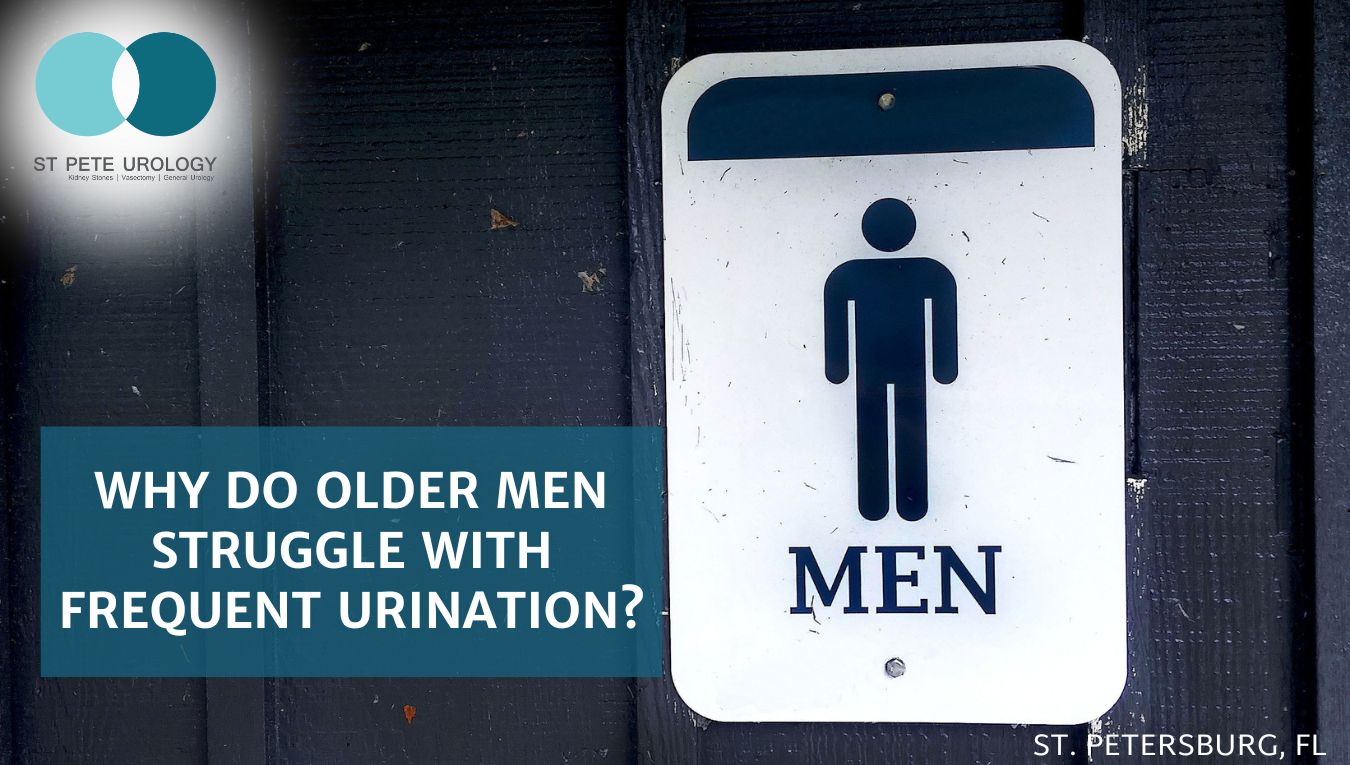Explore prostate cancer treatment options, from active surveillance to surgery, with insights tailored for St. Petersburg patients. Understand your choices.
Continue readingEarly Signs of Prostate Cancer: What Should Men Know?
Discover the early signs of prostate cancer, from urinary changes to subtle red flags, and learn when men in St. Petersburg should schedule screenings.
Continue readingManaging Overactive Bladder: Tips and Treatments
Discover effective overactive bladder treatment options. Learn practical tips and strategies to manage symptoms and regain control of your daily life.
Continue readingWhat Is Overactive Bladder and Who Is at Risk?
Learn what is overactive bladder, its symptoms, who’s at risk, and when to seek care in St. Petersburg. Regain control—contact our urology experts.
Continue readingHow Is Erectile Dysfunction Treated Today?
Explore modern erectile dysfunction treatment options – from pills to implants – and learn when to see St Pete Urology for personalized care.
Continue readingWhat Causes Erectile Dysfunction in Men?
Discover the top erectile dysfunction causes, including physical and psychological factors, and find expert care at St Pete Urology.
Continue readingHow Can Women Prevent Recurrent UTIs?
Prevent recurrent UTIs in women with proven methods—hydration, hygiene, vaginal estrogen, probiotics & more. Expert advice from St Pete Urology.
Continue readingWhy Are UTIs More Common in Women?
Discover why UTIs are more common in women and learn effective strategies to prevent them. Stay informed and protect your urinary health.
Continue readingWhat Are the Latest Treatments for Enlarged Prostate?
Explore the latest treatment for enlarged prostate, including minimally invasive options like Rezūm and Aquablation, to improve urinary symptoms effectively.
Continue readingWhy Do Older Men Struggle with Frequent Urination?
Discover why frequent urination in older men occurs, its impact on daily life, and effective treatment options to improve quality of life.
Continue reading









